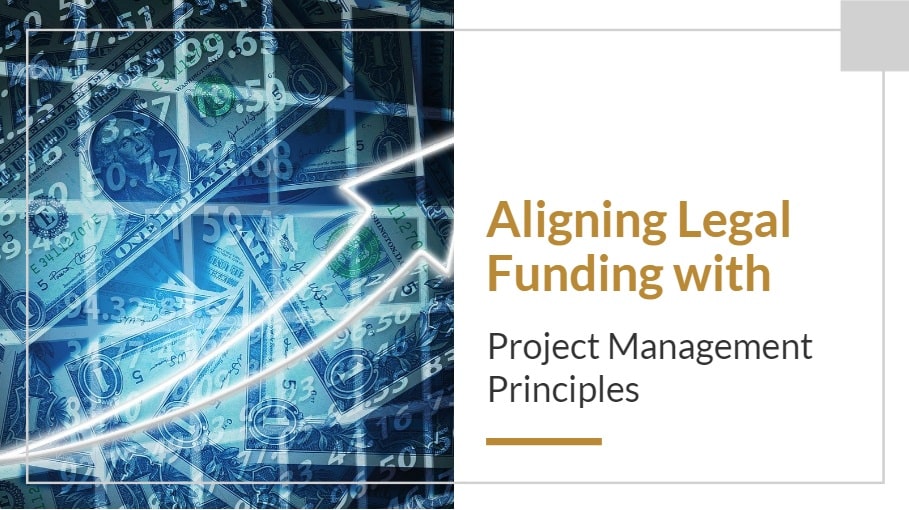Financing complex legal battles can be daunting for individuals and businesses. From hiring expert witnesses to covering months of negotiations, the costs of litigation can rapidly escalate. Sometimes, these expenses can hamper the ability to pursue a claim significantly when other operational priorities already stretch budgets. That’s where legal funding steps in. Offering a third-party infusion of resources allocated explicitly for ongoing legal disputes creates a lifeline for those needing financial stability during a challenging time.
Table of Contents
Yet legal funding is not just about money; it also involves managing risk, orchestrating deliverables, and overseeing timelines—factors that resonate with the tenets of project management. Below is an in-depth look at how this harmony unfolds and why legal funding can be vital for ensuring that essential litigation tasks aren’t derailed by budgetary strain.
The Connection Between Litigation and Project-Oriented Thinking
At its core, a legal dispute often unfolds much like a complex project: there’s a central goal (resolving the case), multiple stakeholders (clients, attorneys, funders, and potentially insurance companies), tasks with deadlines (court filings, evidence gathering), and a finite scope of work (negotiations, motions, trials). From a project management perspective, keeping these components in sync is vital for a smooth process.
However, one unique challenge arises when it comes to financing the project. Traditional business budgets might not account for extended legal battles, especially if they involve unpredictable external factors such as lengthy court schedules or high-cost expert testimonies. By bringing in an external funding partner, individuals and companies can free up capital to maintain regular operations while effectively managing the “project” of litigation.
How Legal Funding Helps Manage Financial Uncertainties
Legal funding, or litigation finance, entails a third party providing the plaintiff or legal team with capital to cover lawsuit-related expenditures. Instead of tying up personal or corporate budgets, these funds can address critical costs such as attorney fees, discovery expenses, and consultation with expert witnesses. The funder receives a portion of the proceeds once the case concludes—if it results in a favorable judgment or settlement. It differs from conventional credit lines because many agreements are non-recourse, meaning if the case does not succeed, the funded party typically owes nothing or very little.
This arrangement holds clear benefits from a risk-management standpoint. Instead of stretching internal resources or accumulating conventional debt, plaintiffs or companies leverage an alternative financing model tailored to litigation’s inherent risks and timelines. Moreover, aligning with a funder shifts part of the financial uncertainty of the client’s balance sheet, letting them focus on the operational aspects of running projects and delivering on existing commitments. The Consumer Financial Protection Bureau provides resources on different credit products, underscoring the importance of fully comprehending terms before entering into financial obligations, which also applies to litigation funding agreements.
Incorporating Legal Funding into Contract Management
In many business circles, contract management includes identifying, evaluating, and mitigating risks arising from contractual disputes. When conflicts escalate, costs can balloon quickly. For example, a construction firm might face legal fees if a subcontractor disputes terms over delayed payments or allegations of substandard materials. If the construction firm has a limited operating budget or ongoing projects that demand immediate capital, paying for a protracted legal battle can become a significant strain.
By integrating legal funding strategies into the company’s risk assessment process, leaders can plan how to source financing if a dispute arises. This proactive stance reflects a project management mindset: anticipating potential obstacles and outlining a contingency for covering them. When performed wisely, using litigation finance as part of overall contract management ensures that essential agreements are upheld, helping maintain stable relationships with stakeholders and preventing minor disputes from becoming serious financial threats.
Balancing Strategies, Timelines, and Costs
Managing time efficiently is crucial in both project management and litigation. Missed deadlines can result in unfavorable judgments, sanctions, or protracted negotiations that inflate legal bills. When a party faces mounting costs with no immediate payment source, settling too early or cheaply becomes a tempting—though sometimes detrimental—option. Legal funding counters this dynamic by injecting the financial buoyancy needed to see a case through to its natural conclusion.
It’s equally important to explore whether the projected benefits of legal funding outweigh its costs. For instance, a claim with minimal potential recovery may not justify the expense of a funding agreement. At the same time, a significant commercial dispute might benefit from external financing that supports a more comprehensive legal strategy. Proper budgeting, thorough evidence collection, and methodical scheduling feed into these decisions, paralleling the project manager’s emphasis on measurable objectives and well-defined milestones.
Linking Funding Arrangements to Thorough Guides on Support
An examination of how individuals and organizations can secure resources for legal disputes offers a window into the specific steps involved in obtaining financing. From submitting preliminary case information to finalizing an agreement that outlines the funding terms, each phase demands clear communication and systematic documentation—attributes strongly aligned with best practices in project management. This synergy underscores that a structured approach, fueled by factual clarity and transparent negotiation, significantly boosts the chances of finding a fair and productive legal funding arrangement.
By comparing various funding providers, assessing contract details, and keeping all participants informed about key deadlines, plaintiffs can reduce uncertainties and maintain forward momentum in litigation. Just as a project manager ensures that deliverables meet specified requirements and finish on schedule, so does a well-coordinated legal team match financial strategy with legal objectives.
Real-World Impact and Ethical Considerations
Some critics of legal funding question whether it might encourage frivolous lawsuits. However, many in the legal and business worlds argue that it has the opposite effect—funders assess prospective claims carefully, supporting only those with a plausible chance of success. Ethically, bar associations and state courts emphasize clear communication to preserve attorney-client privilege, ensure no hidden conflicts of interest, and maintain the client’s ability to decide key legal matters.
Such ethical guidelines mirror the code of conduct familiar to project management professionals, who also ensure open transparency and weigh potential consequences before initiating new tasks or risk management plans. Engaging in fair dealing aligns with the value system that underpins sound business practices and responsible legal advocacy. The American Bar Association publishes insights on litigation finance, exploring considerations that lawyers and clients should evaluate before forming an agreement.
Concluding Thoughts
Legal funding isn’t merely a temporary fix for cash-strapped plaintiffs. When viewed through a project management lens, it’s a strategic tool that helps align financial resources, timelines, and stakeholder expectations. By entirely securing the funds needed to pursue rightful claims, plaintiffs can navigate the legal system with more substantial negotiating power while preserving resources for other vital operational tasks. This approach seamlessly integrates into risk management and contract oversight for businesses, helping leaders ensure continuity even if unexpected legal hurdles arise.
Whether it’s a straightforward personal injury case or a complex commercial dispute, understanding the fundamentals of legal funding can be the difference between a rushed settlement and a well-reasoned resolution. This perspective also highlights that combining careful planning with external financing isn’t solely about meeting immediate expenses. It’s about reinforcing the broader principles of efficiency, transparency, and forward-thinking—values that resonate within project management and legal spheres.

David is a dynamic, analytical, solutions-focused bilingual Financial Professional, highly regarded for devising and implementing actionable plans resulting in measurable improvements to customer acquisition and retention, revenue generation, forecasting, and new business development.















